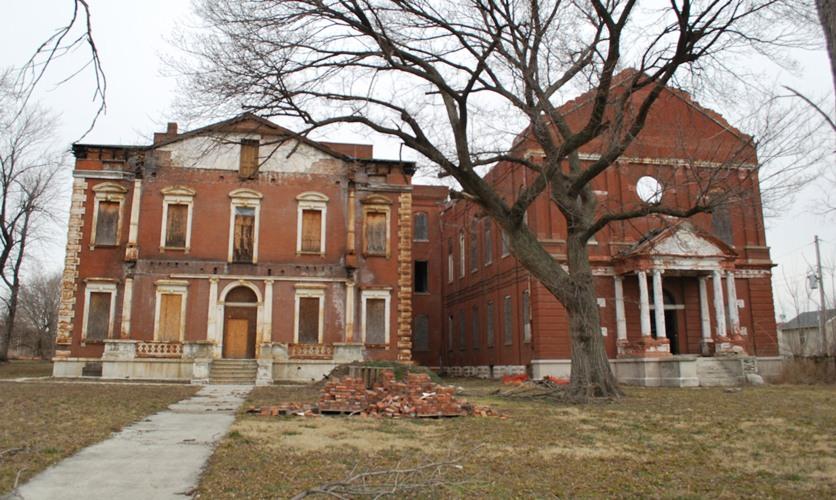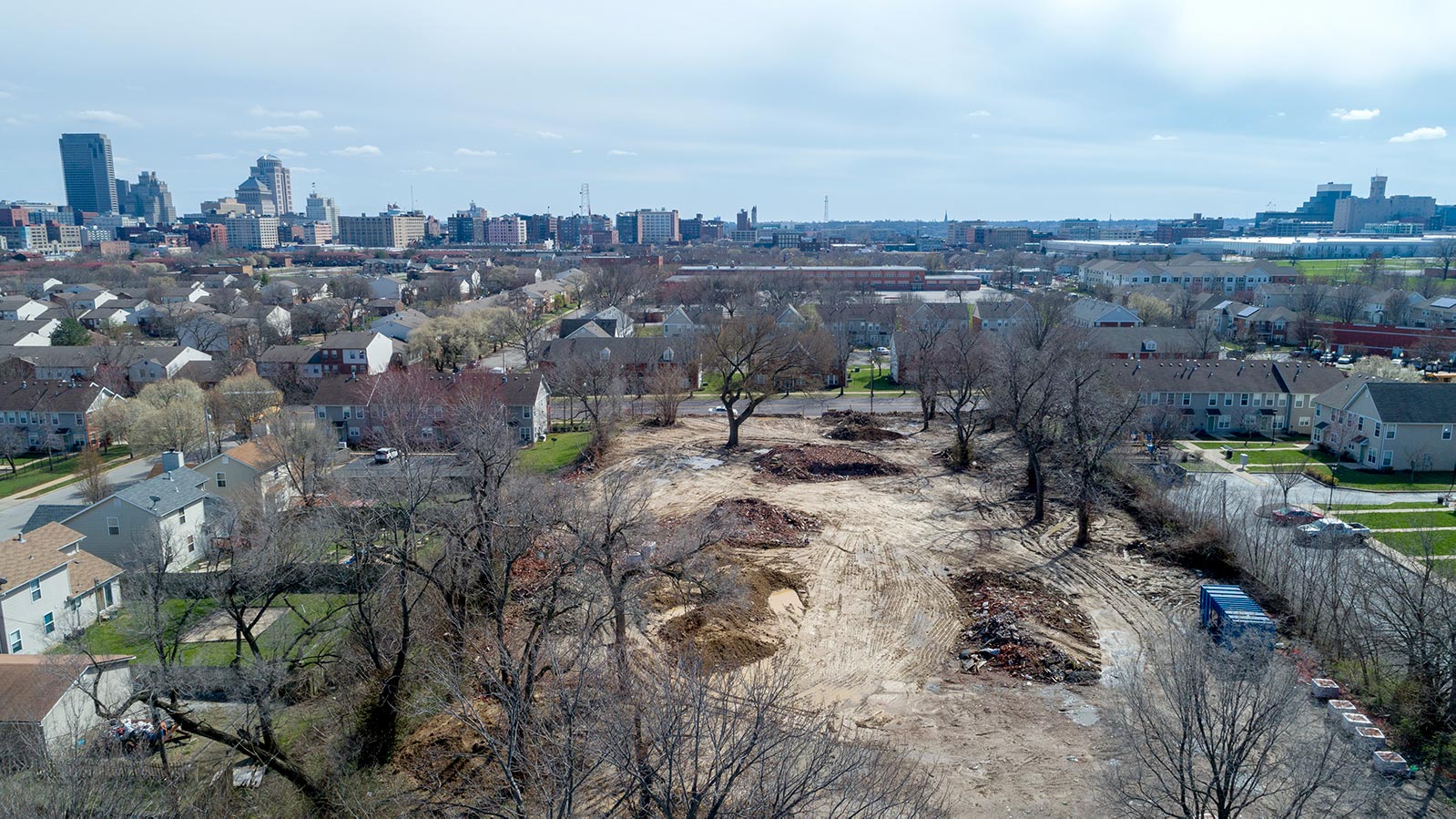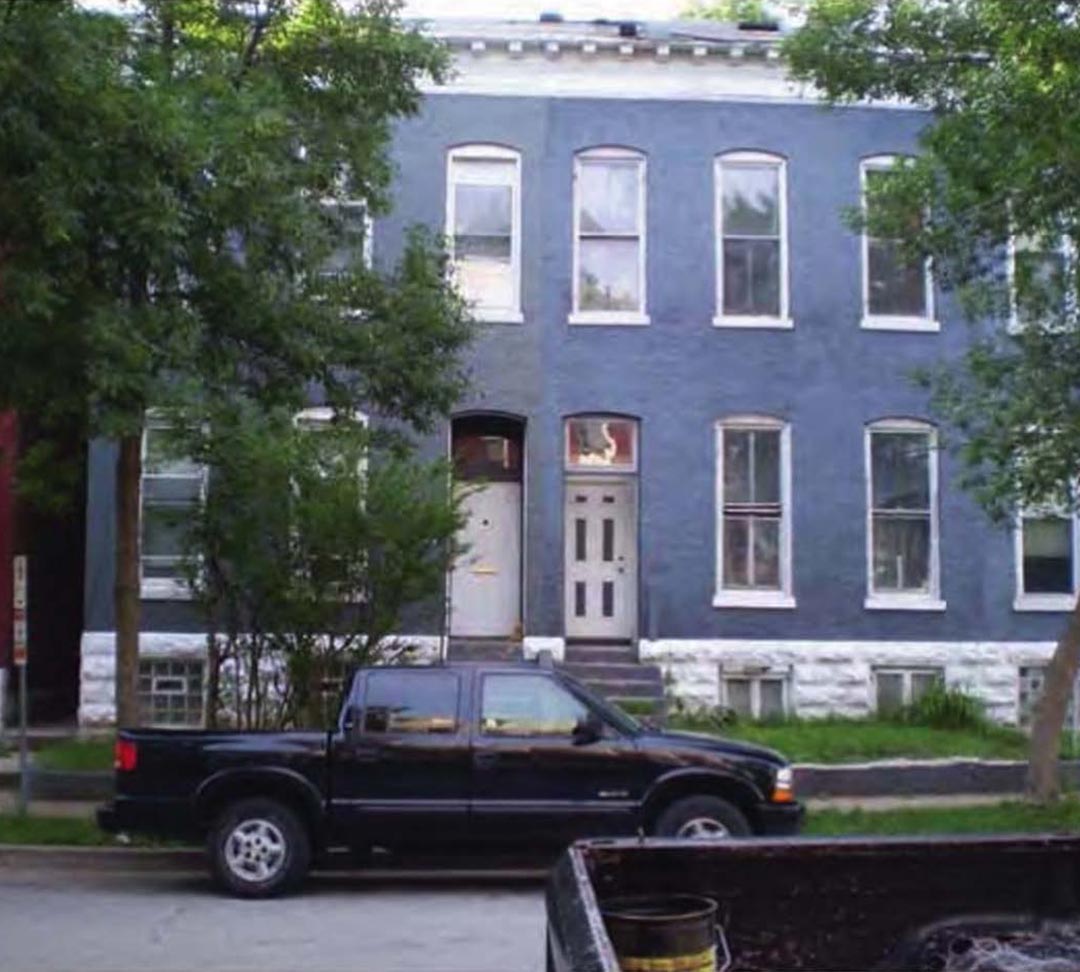“This is not what I call ‘rape and scrape’ where we tear everything down and start over and build a suburban project.”
— Paul McKee, 2009
Nearly a decade after Paul McKee sold St. Louis on a vision worth billions to rehab more than 150 properties on the city’s north side, roofs have caved, walls have crumbled and residents have lost patience — and hope.
“No more than ten are rehabable.”
— Paul McKee, 2018
Once promised for rehab, vacant buildings owned by developer Paul McKee now scar city’s north side
Published Nov. 30, 2018
Tracey Edwards tells her kids not to walk near the two buildings at the end of her street.
The old corner store and the home just two lots down have stood empty, with windows and doors unlocked, for all nine years that Edwards has lived in her north St. Louis neighborhood. The buildings are an eyesore and have drawn drug activity and illegal dumping to an otherwise tidy street, the 52-year-old said.
“It’s a bad thing that corrupts the beauty of this little area,” Edwards said.
The buildings are just two that Paul McKee proposed to rehabilitate beginning in 2010. The plan would have created several historic districts, preserving the historically black neighborhoods that McKee planned to redevelop in large swaths.
Instead, dozens of the structures were demolished, while many more still stand open to the elements and unwelcome visitors.
Loading...
The future of McKee’s $8 billion Northside Regeneration project has been uncertain since June, when the City of St. Louis tried to sever legal ties to the project after alleging he hadn’t fulfilled his end of development deals. The city and Northside are now tangling in court over development rights.
Whether McKee retains those rights or not, many of the buildings slated for rehabilitation have little chance for preservation.
“No more than 10 are rehabable,” McKee told St. Louis Public Radio in an August interview.
Those that still stand create big problems for their communities. Neighbors have reported vandalism, fires, drug use, squatters and shootings in and around the properties; homeowners next door have had issues with loitering strangers, overgrown yards and pests.
In the more than seven years since McKee promised to rehab the buildings, the developer has received only two rehabilitation permits from the city. One building, the Clemens House, burned down last year. Northside Regeneration uses the other as its office. Fewer than 10 have occupancy permits, a requirement for someone to live in a home or apartment.
Most are improperly boarded up or missing walls, allowing anyone to access them.
That’s the case for the buildings on Tracey Edwards’ street in the St. Louis Place neighborhood. Like many of McKee's Northside buildings, the windows and doors are wide open, so it's nearly impossible to keep them secure.
St. Louis Public Schools buses pick up children directly across the street from the two buildings, where grass and shrubs have grown almost 5 feet high. To Edwards, they seem like a huge hazard for neighborhood kids.
“It’s just a matter of time” until someone gets hurt, Edwards said. “Anybody could walk into it and do whatever they choose.”
Sometimes, after dropping her own children at school in the morning, Edwards sits in her car across from the bus stop to make sure nothing happens to the other kids while they wait for the bus.
“It just doesn’t belong on anybody’s neighborhood street or corner,” Edwards said. “I just don’t know how the city is allowing it to just sit and exist like this.”
The two properties by the bus stop were listed for rehabilitation on Northside Regeneration’s most recent historic preservation plan, provided to the city in 2013.
The city officials did not respond to a request for comment.
St. Louis Mayor Lyda Krewson has pledged extra public resources to address the city’s problems with vacant buildings. A handful of Northside Regeneration–owned buildings are scheduled to be demolished by the city, with McKee reimbursing those costs. But the city owns more than 3,200 vacant buildings, which will receive the majority of public demolition funds in 2018.
St. Louis Development Corporation, the economic arm of the city that made development deals with McKee, refused to take part in an interview without first receiving exact questions in advance. St. Louis Public Radio declined.
‘A missed opportunity’
Neighbors aren’t the only ones worried about the state of McKee’s rehab projects.
In July 2017, the Clemens House, a landmark historic building built by a relative of famed author Mark Twain, burned down. McKee had repeatedly promised he was working on ways to restore the building.
The mansion had become “a hallmark of the marketing for Northside Regeneration,” according to Andrew Weil, executive director of the Landmarks Association of St. Louis, which preserves historic buildings and advocates for preservation.
McKee filed a permit in 2010 to do a $6.2 million renovation of the property. Instead, it burned to the ground.


Top: The Clemens House, on Cass between 18th and 19th, in a photo
from 2013 (Maria Altman | St. Louis Public Radio).
Bottom: A view looking to the south of the Clemens House's empty lot in
October 2018 (Brent Jones | St. Louis Public Radio).
Weil began to wonder: If such a key piece in Northside Regeneration’s rehabilitation plan had burned down, what about other properties McKee had promised to rehabilitate?
Landmarks Association surveyed the 154 addresses listed on McKee’s original 2010 list of intended rehabs. They found dozens of empty lots and even more “potentially dangerous buildings or fragments of buildings.”
Weil said his team assumed that at the beginning of the project, rehab was within reach for the listed buildings, although it’s difficult now to confirm if that was the case. According to property records, some were inhabited or recently inhabited when McKee purchased them.
Now, Landmarks Association said, few of the buildings would be easily rehabbed. Most of the buildings are missing walls, roofs, windows, arches or other important structural features, rendering them uninhabitable.
To Weil, that damage is irreversible.
“Without the historic rehab component of Northside Regeneration, you lose the sense that this ever was an urban, historic neighborhood,” he said. “Whatever form it takes now it has much less of an opportunity to have any kind of reference or anchor in the place that it’s located.”
A broken promise
When Darren Hawkins saw St. Louis Public Radio reporters photographing a McKee building next to his home he wanted to know: “Are they going to knock that down?”
It was a common question in neighborhoods within the more than 2-square-mile project footprint. Few knew that the buildings had ever been slated for rehab, and many wondered where to find information about demolitions. They were frustrated about living next to vacant buildings.
The state of the project is a far cry from what McKee promised in 2009, when he first went public with the Northside Regeneration project.
In initial applications for tax increment financing, Northside Regeneration estimated that it would spend $300 million on rehabilitation. A 2009 redevelopment plan said Northside Regeneration would complete rehab projects by December 31, 2011, but didn’t specify which buildings or how many.
In a July 2009 interview with St. Louis Public Radio’s “St. Louis on the Air,” McKee told host Don Marsh that he planned to restore about 60 buildings of the several hundred he owned at the time.
“This is not what I call ‘rape and scrape,’ where we tear everything down and start over and build a suburban project,” McKee told Marsh. “That’s not the case at all. We own over 60 historic buildings that we will restore, and we know exactly what buildings are historic and what ones should stay and what ones should go.”


One example of a property Northside slated for rehab, from a 2010 property preservation plan (left) and in 2018 (right).
That commitment swelled to 154 by 2010, when Northside Regeneration submitted to the city a preservation plan prepared by Lafster & Associates, a development consulting firm. Yet the plan came with a letter noting that the proposal could change based on building condition.
Over the next several years McKee dismissed widespread accusations that he had allowed the buildings to decay so that he could avoid paying to restore decrepit properties.
In 2014, he told St. Louis Public Radio that allowing the buildings to degrade would be “foolishness,” because it would make the rehabs ineligible for historic tax credits that Northside Regeneration could collect.
“The ones that are worth saving, we’ve been trying to save,” he said.
Between 2010 and 2013 properties moved between rehab and demolition lists. All told during that period, McKee committed to rehabbing a total of 158 addresses, some of which he would never own. But by 2013, 35 properties originally slated for rehab — about a fifth of the original rehab list — were reassigned for demolition.
Thirty of those 35 properties had been confirmed for rehabilitation in legally binding agreements between McKee and the St. Louis Development Corporation as recently as 2012. Six buildings were demolished to make way for the National Geospatial-Intelligence Agency’s campus.
That so many buildings considered candidates for rehabs one year could be put on a demolition list the next seems plausible but preventable to Weil, the historic preservation specialist.
“One day is enough to take a building from rehabable to not rehabable,” he said, adding that buildings require careful upkeep to keep secure, and brick theft and arson are active threats.
Frustrated neighbors
Jerry Willis, 56, used to trim the yard across the street from his mother’s house for 40 cents. That was more than 45 years ago, when the house was a well-maintained home. But after a series of owners couldn’t afford an expensive roof repair, the Willises watched the property slide into decay.
Now McKee owns the building, and Willis trims the yard for free. The work — cutting back shrubs and trees with a chainsaw — removes hiding places for vagrants, squatters and drug dealers he says he’s seen around the building and other vacant properties nearby.
Willis’ mother, Rosie, is mad that McKee doesn’t keep the property maintained.
“The only reason they are not as tall on the front as they are on the back is because Jerry has been keeping all his front cut down for our safety,” she said. “Not for the benefit of Paul McKee. I definitely want to stress that.”



Top: Jerry Willis trims the yard across the street from his mother's
house, a property owned and scheduled for rehab by Paul McKee (Carolina Hidalgo | St. Louis Public Radio).
Bottom: At
left, the property across the street from Jerry Willis' mother's house, as it appeared in an agreement
with the city in 2010 (Provided photo). At right, the property in 2018.
Jerry Willis is suspicious whether McKee ever intended to rehab the house even back in 2010. “No one could’ve saved this building,” he said.
By 2013, the home was listed for demolition, but today it’s still standing — barely.
The Willises say the building is a huge safety concern for the children who play in the neighborhood and the adults who visit the garden. The house sits vacant near multiple community gathering places in the JeffVanderLou neighborhood. It’s across the street from a public park, a recreation center and the Fresh Starts Community Garden run by Willis and his mother, Rosie.
“It’s just really bad,” he said. “This is what Paul McKee owns. This is it. This is what happens when these buildings are in the community.”
Rosie Willis said she hopes that the building will be brought down soon.
But in the meantime, she feels like St. Louisans have forgotten about the people who live near the vacant buildings McKee owns.
“People need to come and see. You know, there are people living there; there are caring people,” she said. “There are still a remnant of homeowners down there that, excuse my grammar, we ain’t moving.”
Correction: The City of St. Louis began severing ties with Paul McKee's Northside Regeneration project in June. Tracey Edwards lives in the St. Louis Place neighborhood. An earlier version of this story misidentified when the city tried to sever those ties and in which north St. Louis neighborhood Edwards lives.
Photos by Kae Petrin (unless otherwise noted) • Editing by Maria Altman & Brian Heffernan • Web production by Brent Jones

